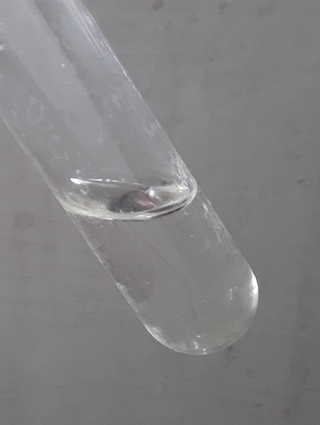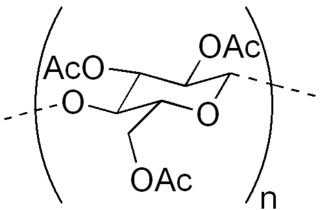


A permanent marker or indelible marker is a type of marker pen that is used to create permanent or semi-permanent writing on an object.



A permanent marker or indelible marker is a type of marker pen that is used to create permanent or semi-permanent writing on an object.
In general, permanent marker ink comprises a main carrier solvent, a glyceride, a pyrrolidone, a resin, and a colorant, [1] making it water resistant. It is capable of writing on a variety of surfaces from paper to metal to stone. They come in a variety of tip sizes (ultra fine to wide), shapes (chisel point, bullet tip, and wide bristle), and colors (metallic, or ultraviolet reactive).
Most markers have alcohol-based solvents. Other types, called paint markers, contain volatile organic compounds which evaporate to dry the ink, and are similar to spray paint. Due to solvents such as toluene and xylene often being present in permanent markers, they have a potential for abuse as a recreational drug.
The permanent marker was invented in 1952 by Sidney Rosenthal.
Permanent markers are used for writing on metals, plastics, ceramics, wood, stone, cardboard etc. However, the mark made by them is semi-permanent on some surfaces. Most permanent marker ink can be erased from some plastic surfaces (like polypropylene and teflon) with little rubbing pressure. They can be used on ordinary paper, but the ink tends to bleed through and become visible on the other side.
In addition to being used for labelling microscopy slides, permanent markers can be used to do a negative stain of a bacterial sample. This means the background is stained with the marker, but the bacteria are not. The bacteria can be seen because they are unstained (lighter) while the background is stained (darker). [2]
Permanent markers are generally used on hard, non-porous surfaces, because instead of staining they form a surface layer that, despite their name, can be removed by high pressure cleaning, paint thinners, or organic solvents such as acetone, xylene, or toluene. When used indoors, isopropyl alcohol, ethanol, and ethyl acetate are preferred cleaners, as their fumes are much less hazardous than toluene and xylene, the main components of paint thinner, or the longer-chain hydrocarbons found in mineral spirits. Other common non-polar solvents include benzene, turpentine and other terpenes (which constitute essential oils of many plants with strong scents), most ethers, chloroform and dichloromethane, hydrocarbon fuels, and diacetone alcohol, among many others. Many of these solvents are toxic, carcinogenic, or flammable, and should only be used with adequate ventilation.
Most brands of "OLFA" marker wipe off easily with acetone-free nail polish remover, the kind containing ethyl acetate, a relatively non-toxic organic solvent.
A permanent marker can also be removed by drawing over it with a dry erase marker on non-porous surfaces such as a whiteboard, [3] as dry erase markers also contain a non-polar solvent. Most dry-erase board cleaner solutions also contain effective organic solvents like 2-butoxyethanol to remove the pigment.
Due to their potential to be used for vandalism, some locales, such as Florida, California, New York City, and Berwyn, Illinois, have laws against possessing permanent markers in public, and prohibit sales of them to minors. [4] [5] [6]

Paint is a liquid pigment that, after applied to a solid material and allowed to dry, adds a film-like layer, in most cases to create an image, known as a painting. Paint can be made in many colors and types. Most paints are either oil-based or water-based, and each has distinct characteristics.

Toluene, also known as toluol, is a substituted aromatic hydrocarbon with the chemical formula C6H5CH3, often abbreviated as PhCH3, where Ph stands for phenyl group. It is a colorless, water-insoluble liquid with the odor associated with paint thinners. It is a mono-substituted benzene derivative, consisting of a methyl group (CH3) attached to a phenyl group by a single bond. As such, its systematic IUPAC name is methylbenzene. Toluene is predominantly used as an industrial feedstock and a solvent.

A solvent is a substance that dissolves a solute, resulting in a solution. A solvent is usually a liquid but can also be a solid, a gas, or a supercritical fluid. Water is a solvent for polar molecules, and the most common solvent used by living things; all the ions and proteins in a cell are dissolved in water within the cell.

Petrochemicals are the chemical products obtained from petroleum by refining. Some chemical compounds made from petroleum are also obtained from other fossil fuels, such as coal or natural gas, or renewable sources such as maize, palm fruit or sugar cane.

In organic chemistry, xylene or xylol are any of three organic compounds with the formula (CH3)2C6H4. They are derived from the substitution of two hydrogen atoms with methyl groups in a benzene ring; which hydrogens are substituted determines which of three structural isomers results. It is a colorless, flammable, slightly greasy liquid of great industrial value.

Butanone, also known as methyl ethyl ketone (MEK) or ethyl methyl ketone, is an organic compound with the formula CH3C(O)CH2CH3. This colorless liquid ketone has a sharp, sweet odor reminiscent of acetone. It is produced industrially on a large scale, but occurs in nature only in trace amounts. It is partially soluble in water, and is commonly used as an industrial solvent. It is an isomer of another solvent, tetrahydrofuran.

Varnish is a clear transparent hard protective coating or film. It is not to be confused with wood stain. It usually has a yellowish shade due to the manufacturing process and materials used, but it may also be pigmented as desired. It is sold commercially in various shades.

A whiteboard is a glossy, usually white surface for making non-permanent markings. Whiteboards are analogous to blackboards, but with a smoother surface allowing for rapid marking and erasing of markings on their surface. The popularity of whiteboards increased rapidly in the mid-1990s and they have become a fixture in many offices, meeting rooms, school classrooms, public events and other work environments.

A marker pen, fine liner, marking pen, felt-tip pen, felt pen, flowmarker, sign pen, vivid, flomaster, texta, sketch pen, koki or simply marker is a pen which has its own ink source and a tip made of porous, pressed fibers such as felt. A marker pen consists of a container and a core of an absorbent material that holds the ink. The upper part of the marker contains the nib that was made in earlier times of a hard felt material, and a cap to prevent the marker from drying out.

White spirit (AU, UK and Ireland) or mineral spirits (US, Canada), also known as mineral turpentine (AU/NZ), turpentine substitute, and petroleum spirits, is a petroleum-derived clear liquid used as a common organic solvent in painting. There are also terms for specific kinds of white spirit, including Stoddard solvent and solvent naphtha (petroleum). White spirit is often used as a paint thinner, or as a component thereof, though paint thinner is a broader category of solvent. Odorless mineral spirits (OMS) have been refined to remove the more toxic aromatic compounds, and are recommended for applications such as oil painting.

A rotary evaporator (rotavap) is a device used in chemical laboratories for the efficient and gentle removal of solvents from samples by evaporation. When referenced in the chemistry research literature, description of the use of this technique and equipment may include the phrase "rotary evaporator", though use is often rather signaled by other language.
A paint thinner is a solvent used to thin oil-based paints. Solvents labeled "paint thinner" are usually mineral spirits having a flash point at about 40 °C (104 °F), the same as some popular brands of charcoal starter.

Ethyl acetate is the organic compound with the formula CH3CO2CH2CH3, simplified to C4H8O2. This colorless liquid has a characteristic sweet smell and is used in glues, nail polish removers, and in the decaffeination process of tea and coffee. Ethyl acetate is the ester of ethanol and acetic acid; it is manufactured on a large scale for use as a solvent.

Rubber cement is an adhesive made from elastic polymers mixed in a solvent such as acetone, hexane, heptane or toluene to keep it fluid enough to be used. This makes it part of the class of drying adhesives: as the solvents quickly evaporate, the rubber solidifies, forming a strong yet flexible bond.
A paint marker is a type of marker pen that is used to create permanent writing on a variety of surfaces such as paper, metal, stone, rubber, plastic, and glass.

Cellulose triacetate, triacetate, CTA or TAC is a chemical compound produced from cellulose and a source of acetate esters, typically acetic anhydride. Triacetate is commonly used for the creation of fibres and film base. It is chemically similar to cellulose acetate. Its distinguishing characteristic is that in triacetate, at least "92 percent of the hydroxyl groups are acetylated." During the manufacture of triacetate, the cellulose is completely acetylated; whereas in normal cellulose acetate or cellulose diacetate, it is only partially acetylated. Triacetate is significantly more heat resistant than cellulose acetate.

Acetone is an organic compound with the formula (CH3)2CO. It is the simplest and smallest ketone. It is a colorless, highly volatile and flammable liquid with a characteristic pungent odor.

Dimethyl carbonate (DMC) is an organic compound with the formula OC(OCH3)2. It is a colourless, flammable liquid. It is classified as a carbonate ester. This compound has found use as a methylating agent and as a co-solvent in lithium-ion batteries. Notably, dimethyl carbonate is a weak methylating agent, and is not considered as a carcinogen. Instead, dimethyl carbonate is often considered to be a green reagent, and it is exempt from the restrictions placed on most volatile organic compounds (VOCs) in the United States.
Lacquer thinner, also known as cellulose thinner, is usually a mixture of solvents able to dissolve a number of different resins or plastics used in modern lacquer.

Paraloid B-72 or B-72 is a thermoplastic resin that was created by Rohm and Haas for use as a surface coating and as a vehicle for flexographic ink. Subsequently, it has found popular use as an adhesive by conservator-restorers, specifically in the conservation and restoration of ceramic objects, glass objects, the preparation of fossils, the hardening of piano hammers, and can also be used for labeling museum objects.